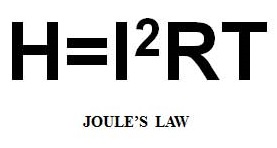In resistance welding the heat is generated according to Joules Law:

This dictates that relatively large currents will be passed through the weld joint to form the weld nugget. In order to do this economically and safely a transformer is used. The transformer’s function is to take a high voltage low amperage input and convert it into personnel safe low voltage high amperage output. The high amperage output is used to generate the heat defined in Joules Law.
After the math is worked out:

Primary voltage times the primary amperage will equal the secondary voltage times the secondary amperage.
Through this system the power company is able to economically deliver the high voltage/low amperage power for conversion by the transformer to low voltage/high amperage welding power.
The secondary reason to reduce the voltage is to make it safe for people to be around. The secondary voltage of the transformer generally runs from 2 – 25 volts. This is safe for personnel to be around in the secondary. Proper grounding of all machines is still required. The control has high voltage inside and should be restricted to authorized personnel.
It is the transformer that enables us to deliver safe high energy power to the resistance welder to make resistance welds.
Reference: RWMA Manual Chapter 19
AWS J1.2:2016
Roman Manufacturing Inc.

